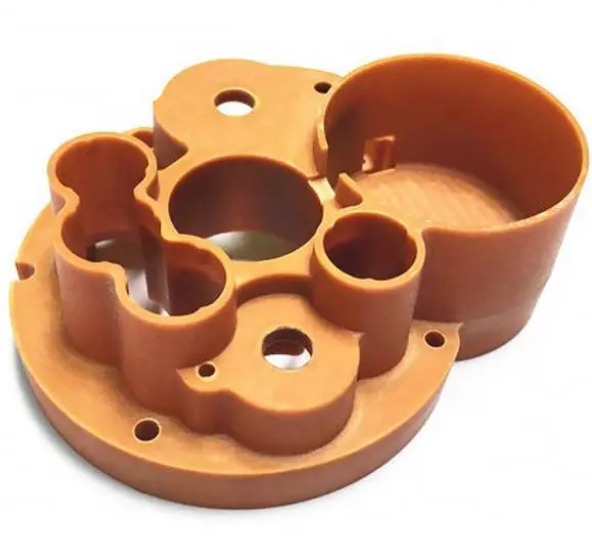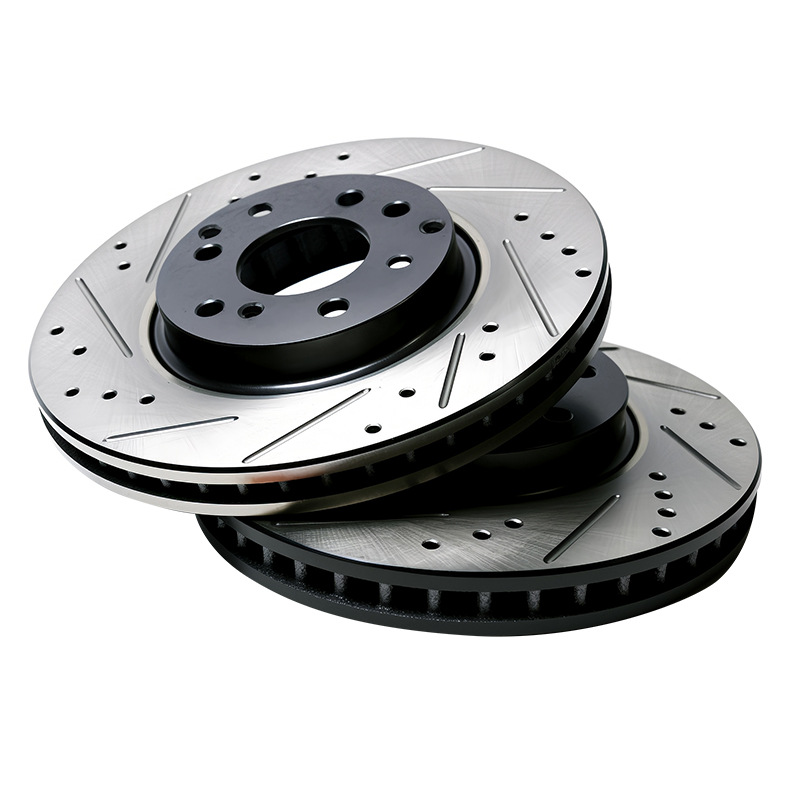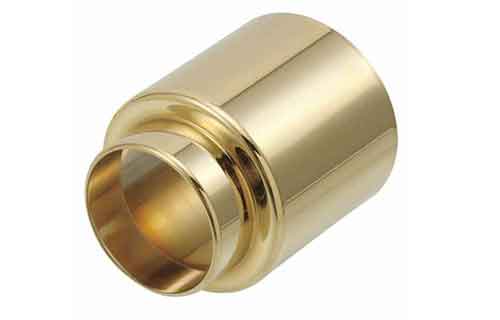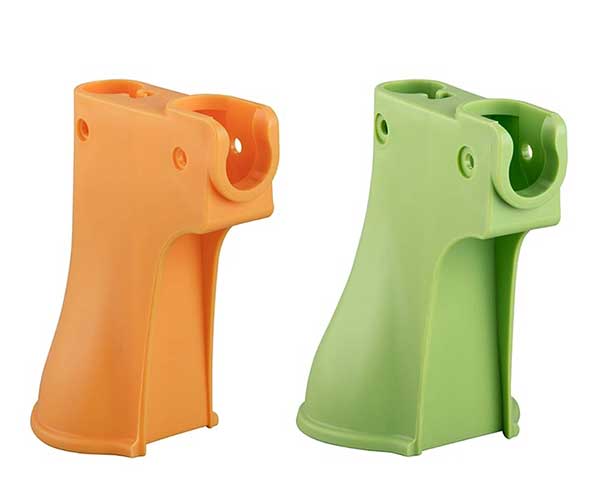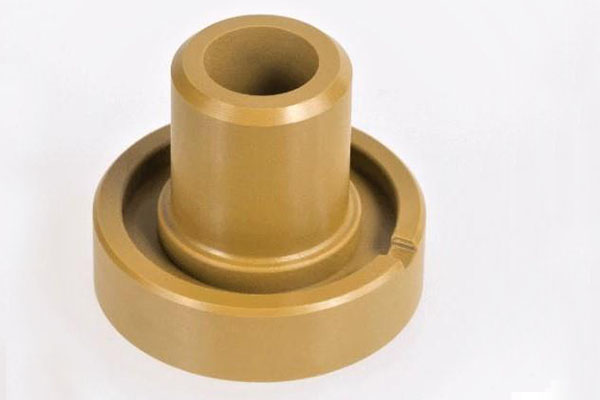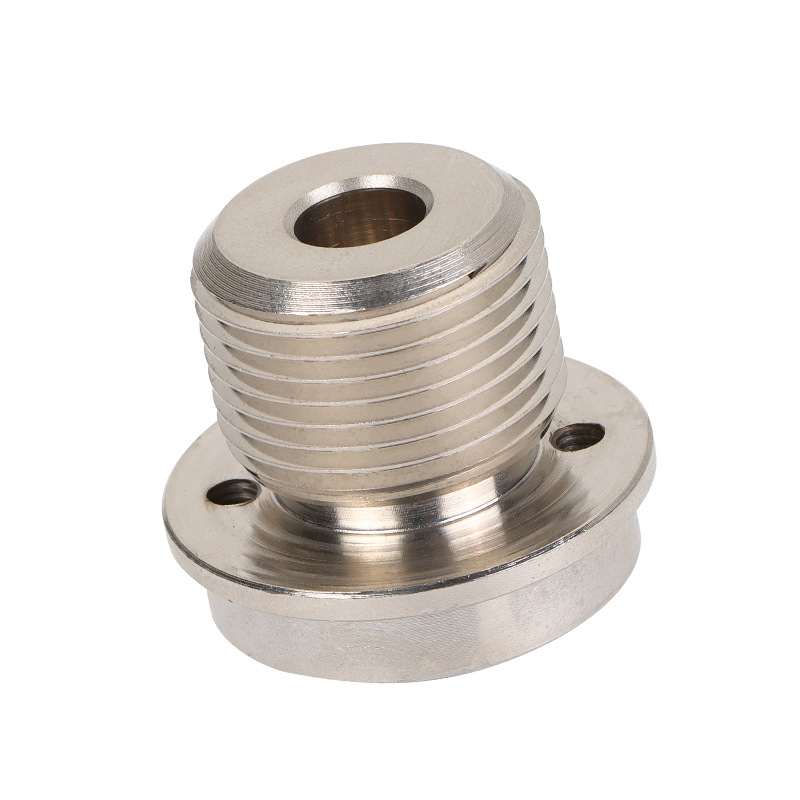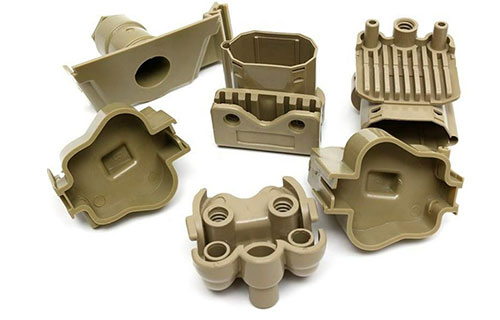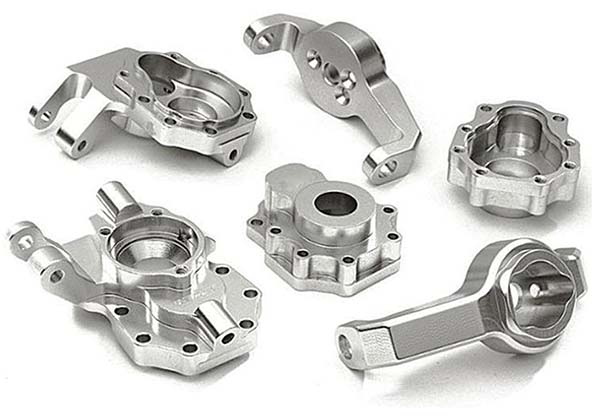Engineers and manufacturers dealing with high-stress, high-friction applications know the struggle: standard coatings scratch, wear down, or corrode too quickly. A hydraulic cylinder in heavy machinery might fail after 10,000 cycles, a mold used for plastic injection could wear out in months, or an aerospace part might degrade under extreme temperatures. What’s needed is a surface treatment that can withstand intense friction, resist corrosion in harsh environments, and maintain dimensional stability—even under the most demanding conditions. This is where surface treatment hard anodizing (Type III) delivers. As the toughest anodizing process available, it creates a thick, dense oxide layer that combines exceptional wear resistance with robust corrosion protection, solving these critical pain points effectively. In this guide, we’ll explore how hard anodizing (Type III) works, its key properties, applications, and how to leverage it for long-lasting, high-performance components.
Introduction to Hard Anodizing (Type III)
Hard anodizing (Type III) is a specialized electrochemical process designed to produce thick, wear-resistant oxide layers on aluminum and its alloys:
- Definition: Hard anodizing (Type III) is an anodizing process that creates a dense, thick aluminum oxide layer (25-100 μm) on the metal’s surface using low-temperature sulfuric acid electrolytes and high voltages. Unlike standard sulfuric acid anodizing (Type II), it prioritizes hardness and wear resistance over aesthetics.
- Historical background: Developed in the mid-20th century for aerospace and military applications, hard anodizing emerged as a solution to the limitations of earlier anodizing methods. Its ability to produce oxide layers with hardness comparable to tool steel made it ideal for high-wear components, quickly gaining adoption in industrial manufacturing.
- Basic principles: Similar to other anodizing processes, hard anodizing uses an electric current to convert aluminum (anode) into aluminum oxide (Al₂O₃) in a sulfuric acid electrolyte. However, it operates at lower temperatures (0-10°C) and higher voltages (30-100V), which slow oxide dissolution and promote the formation of a dense, hard layer.
- Industrial significance: Hard anodizing (Type III) is critical for components requiring extended service life in high-friction environments. It’s used in 60% of aerospace aluminum parts, 40% of industrial tooling, and 30% of high-performance automotive components—extending part life by 5-10x compared to untreated aluminum.
- Environmental considerations: Like standard sulfuric acid anodizing, it uses sulfuric acid but avoids hexavalent chromium. Modern facilities recycle electrolytes and treat wastewater to neutralize acids, complying with regulations like REACH. While energy-intensive due to cooling requirements, its ability to extend part life reduces overall environmental impact.
- Comparison with other anodizing types: Hard anodizing (Type III) differs significantly from Type II (standard sulfuric) and Type I (chromic acid) anodizing:
| Feature | Hard Anodizing (Type III) | Standard Anodizing (Type II) | Chromic Acid Anodizing (Type I) |
| Thickness | 25-100 μm | 1-25 μm | 0.5-10 μm |
| Hardness | 300-500 HV (60-70 HRC) | 150-300 HV | 100-200 HV |
| Temperature | 0-10°C | 15-25°C | 25-35°C |
| Voltage | 30-100V | 12-20V | 20-40V |
| Primary Use | Wear resistance | Aesthetics/corrosion | Bonding/pre-treatment |
Process of Hard Anodizing (Type III)
The process of hard anodizing (Type III) requires precise control to achieve its signature hardness and thickness:
- Pre-treatment processes: Thorough cleaning is essential. Steps include degreasing (with alkaline cleaners), etching (mildly, to avoid excessive material removal), and desmutting (with nitric acid). Unlike Type II, aggressive etching is avoided to preserve dimensional accuracy.
- Electrolyte composition: A 15-20% sulfuric acid solution with additives (e.g., organic acids) to control oxide growth. The additives slow oxide dissolution, allowing thicker, denser layers to form.
- Anodizing tanks: Made of acid-resistant materials like PVC or polypropylene, with insulation and cooling jackets to maintain low temperatures (0-10°C). Tanks must be sized to accommodate large parts like aerospace components or tooling.
- Power supplies: High-voltage DC rectifiers delivering 30-100V and current densities of 2-5 A/dm². The voltage is gradually increased to avoid burning the surface, with total process time ranging from 30 minutes to 2 hours (depending on thickness).
- Temperature control: Critical for success—electrolyte is cooled to 0-10°C using refrigeration units. Lower temperatures (0-5°C) produce harder, denser layers but slow processing, while 5-10°C balances speed and hardness.
- Agitation systems: Gentle stirring (air or mechanical) ensures uniform temperature and electrolyte distribution, preventing cold spots that could cause uneven oxide formation.
- Post-treatment processes: Parts are rinsed to remove acid, then sealed (optional) with hot water or nickel acetate to enhance corrosion resistance. Sealing is less common than in Type II, as it can slightly reduce hardness.
- Safety protocols: Workers use acid-resistant PPE (gloves, aprons, face shields) and insulated tools to handle high voltages. Ventilation systems remove acid fumes, and emergency shutdowns prevent overheating.
Properties of Hard Anodized Surfaces (Type III)
The properties of hard anodized surfaces (Type III) make it unmatched for high-wear applications:
- High wear resistance: The dense oxide layer withstands extreme friction, with a wear rate 10-20x lower than untreated aluminum. It’s comparable to tool steel in abrasion resistance, making it ideal for sliding components like bearings and pistons.
- Corrosion resistance: When sealed, hard anodized parts withstand 1000+ hours of salt spray testing (ASTM B117). The oxide layer acts as a barrier against moisture, salt, and chemicals, outperforming many plating methods in harsh environments.
- High hardness: With a hardness of 300-500 HV (equivalent to 60-70 HRC), hard anodized surfaces resist indentation and scratching. This hardness is consistent throughout the oxide layer, unlike coatings that wear away to reveal softer substrates.
- Dimensional accuracy: Thickness is controlled to ±5%, with typical layers of 25-75 μm. This allows for precise part restoration (e.g., rebuilding a worn shaft) without compromising fit in assemblies.
- Adhesion: The oxide layer is chemically bonded to the aluminum, with adhesion strengths exceeding 50 MPa—far stronger than plating or paint, which can delaminate under stress.
- Thickness: Thicker than other anodizing types (25-100 μm), the layer provides substantial wear material. Critical applications like aerospace landing gear often use 50-75 μm layers for maximum longevity.
- Color: Naturally dark gray or black due to its density, but can be dyed for identification purposes. Dyeing has minimal impact on performance, making it useful for part coding in complex assemblies.
Applications of Hard Anodizing (Type III)
Hard anodizing (Type III) is essential in industries where wear and corrosion resistance are critical:
- Aerospace: Landing gear components, hydraulic cylinders, and engine parts rely on hard anodizing to withstand extreme friction and temperature fluctuations. It extends the service life of these parts from 500 to 5000+ flight cycles.
- Automotive: High-performance engine components (pistons, cylinder liners) and racing parts use hard anodizing to resist wear from friction and heat. It’s also used in brake calipers and suspension components for durability.
- Tooling and molds: Injection molds, stamping dies, and cutting tools use hard anodizing to resist wear from repeated use. Mold life increases by 2-3x, reducing downtime for replacements.
- Medical devices: Surgical instruments and implantable components (e.g., orthopedic plates) use hard anodizing for corrosion resistance during sterilization and wear resistance in the body.
- Marine industry: Propeller shafts, pumps, and valves use hard anodizing to resist saltwater corrosion and wear from sand or debris. It outperforms chrome plating in these harsh environments.
- Industrial machinery: Hydraulic rods, gears, and conveyor components benefit from hard anodizing’s wear resistance, reducing maintenance in factories and mines.
Equipment and Materials for Hard Anodizing (Type III)
Specialized equipment and materials are required to achieve consistent hard anodizing results:
- Anodizing tanks: Large, insulated tanks made of PVC or polypropylene, with cooling jackets connected to industrial refrigeration units. They must withstand low temperatures and high voltages without cracking.
- Electrolyte solutions: 15-20% sulfuric acid in deionized water, with additives like oxalic acid to control oxide structure. Impurities (e.g., chloride) are kept below 20 ppm to prevent pitting.
- Power supplies: High-voltage DC rectifiers (0-100V, 0-1000A) with programmable ramps to gradually increase voltage. Digital controls ensure precise current density, critical for uniform thickness.
- Temperature control: Industrial chillers capable of maintaining 0-10°C in large volumes of electrolyte. Thermostats with ±0.5°C accuracy prevent temperature spikes that could weaken the oxide layer.
- Anodes and cathodes: The aluminum part is the anode, while cathodes are lead or titanium (resistant to high voltages). Cathodes are placed symmetrically around the anode to ensure even current distribution.
- Agitation systems: Low-flow pumps or air spargers to circulate electrolyte without creating turbulence, which could disrupt oxide formation. This is especially important for complex parts with internal channels.
- Safety equipment: Insulated gloves and tools for high-voltage work, acid-resistant PPE, and ventilation systems. Emergency shutoffs and voltage monitors prevent electrical hazards.
Quality Control and Maintenance in Hard Anodizing (Type III)
Rigorous quality control and maintenance ensure hard anodizing meets performance standards:
- Equipment maintenance: Tanks are inspected weekly for leaks or insulation damage, while chillers are serviced monthly to maintain cooling efficiency. Rectifiers are calibrated quarterly to ensure accurate voltage output.
- Solution maintenance: Electrolyte concentration is tested daily—sulfuric acid levels must stay within 15-20%. Aluminum ion buildup is monitored; levels above 15 g/L require partial solution replacement to prevent layer softening.
- Surface inspection: Visual checks identify defects like uneven color or pitting. Microscopic examination (100x) verifies oxide uniformity, with porosity measured via dye penetration tests.
- Thickness measurement: Eddy current gauges (ASTM B244) or X-ray fluorescence (XRF) measure thickness, with tolerances of ±5%. Critical aerospace parts often require 50-75 μm, while tooling uses 25-50 μm.
- Hardness testing: Vickers hardness testers (ASTM E384) verify hardness (300-500 HV). Testing is done at multiple points to ensure consistency across the part surface.
- Adhesion testing: The impact test (ASTM D2794) or thermal shock test ensures the oxide layer doesn’t crack or peel under stress—critical for high-performance applications.
- Quality standards: Compliance with MIL-A-8625 (military specification for hard anodizing) and ISO 10074 ensures consistency. Aerospace clients often require additional certifications like Nadcap.
Yigu Technology’s Perspective
As a leading custom manufacturing supplier in China, Yigu Technology specializes in hard anodizing (Type III) for aerospace and industrial clients. Our process achieves 25-75 μm layers with 300-500 HV hardness, meeting MIL-A-8625 standards. We use precision chillers (±0.5°C) and high-voltage rectifiers for uniform results, even on complex parts like hydraulic cylinders. Our quality control includes XRF thickness testing, hardness verification, and 1000-hour salt spray validation. By optimizing electrolyte composition, we balance wear resistance and corrosion protection. Hard anodizing (Type III) is the gold standard for high-wear components, and we tailor processes to each client’s needs—delivering durable, long-lasting coatings that reduce maintenance costs.
FAQs
- How does hard anodizing (Type III) differ from hard chrome plating?
Hard anodizing is integral to aluminum (no peeling risk) and offers better corrosion resistance, while hard chrome is a separate layer (prone to peeling) with higher friction. Anodizing is lighter and more cost-effective for aluminum parts.
- Can hard anodizing be applied to all aluminum alloys?
It works best on wrought alloys (e.g., 6061, 7075). High-silicon cast alloys may produce uneven layers, requiring special pre-treatment. Our experts can advise on alloy suitability for your application.
- What is the maximum thickness achievable with hard anodizing (Type III)?
Typically 100 μm, but thicker layers (up to 150 μm) are possible for specialized applications. However, thickness over 75 μm may reduce adhesion, so we recommend 25-75 μm for most high-wear needs.
